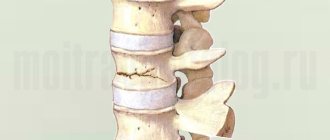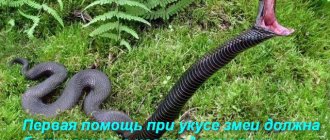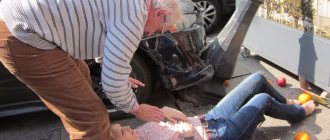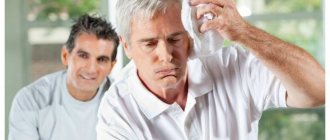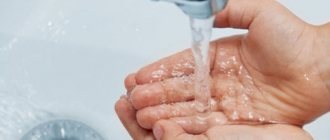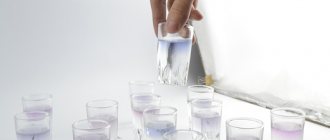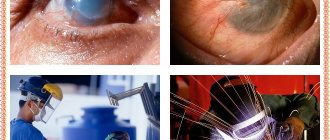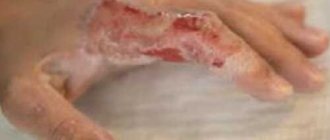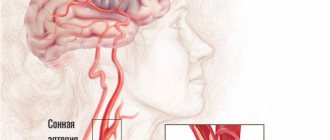A stroke is an acute disorder of cerebral circulation, which entails a variety of negative consequences: impaired memory, speech, thinking, etc. If you suspect a stroke, when the first signs appear, you should not waste time, but you should immediately call a doctor.
First aid for stroke is also important, because the future prognosis largely depends on how correctly the first steps were performed. What to do if a stroke occurs? How to help a person before the ambulance arrives?
Priority measures
First aid for a stroke at home should be provided as correctly as possible. Regardless of where the stroke occurred and what caused the stroke, those providing assistance should act according to the following algorithm:
- Do not panic;
- Assess the general condition of the victim. First aid for a stroke begins with identifying the presence of consciousness, breathing, and heartbeat;
- Call an ambulance;
- When the first signs of a stroke are detected, it is necessary to provide resuscitation assistance, but only if clearly necessary;
- Correct positioning of the patient's body is also very important. Before providing first aid for a stroke, you need to lay the person correctly, on his back or on his side;
- Emergency care for a stroke involves providing access to oxygen to facilitate breathing;
- You need to constantly pay attention to the person’s condition.
The above describes general measures that should be taken if you have a stroke. First aid must be competent and timely so that a person has not only a chance to survive, but also to fully recover from an illness. If there are significant disturbances in the patient’s well-being, all measures must be taken very quickly. It is better if first aid for heart attack and stroke is performed by several people.
Detailed description of the required steps
It is important to follow all the subtleties, because any mistake can worsen the situation.
But even if the signs of a stroke and micro-stroke in a woman are very obvious, there is no need to panic. First responders should act quickly. Fear and unnecessary movements can lengthen the time of assistance and lead to negative consequences.
The patient should be reassured if he is conscious. The first thing to do in case of a stroke before the ambulance arrives is to reassure the conscious person that they will definitely get help. An illness of this kind always begins suddenly, so a strong stress reaction will certainly be present.
The presence of anxiety can aggravate the already deteriorated state of the brain.
Calling an ambulance is very important; you should make the call as quickly as possible. A minimal suspicion of a microstroke should be the basis for contacting specialists who are able to understand the situation much better and more correctly. When you get through, you should give the dispatcher information about what happened and clearly name the location. All this will help save precious minutes, while medical workers are on the way, pre-hospital medical care should be provided.
The following factors will help assess the condition:
- Presence of consciousness. Absence, as well as gloominess, are a sign of a serious condition. This does not happen with mild forms.
- Breath. The algorithm of actions involves assessing breathing and the presence of breathing disorders, for example, intermittency. A person should be given artificial respiration only if there is no movement of the chest.
- Pulse. You should listen to the heartbeat to understand its frequency and rhythm. It is allowed to massage the heart only if there is no pulse at all.
It is equally important to understand the characteristics of a stroke and symptoms in order to provide first aid in accordance with them. You need to ask if there is severe pain in the head or if there is dizziness. Signs of a stroke in men and women are a distorted face, the inability to smile or perform other simple facial actions, the presence of speech impairment, or, less often, its complete absence.
Weakness, numbness on one or both sides, and immobility may also be observed. You need to understand whether there is visual impairment and problems with coordination of movements. The combination of the symptoms described above indicates a hemorrhagic stroke and the need for emergency care.
Correct position
Regardless of the presence of problems with consciousness, it is necessary to provide the person with peace. Movements, and especially attempts to move independently, should be excluded.
First aid initially boils down to the need to place the victim on his back, lifting his head and chest if he is conscious. A horizontal position, which involves turning the head to one side, will be necessary in case of fainting or convulsions.
Use of medications
When paramedics have already been called, first aid does not involve the use of medications. But if the process of delivery to the hospital is delayed, the following drugs can help the brain, which should preferably be administered intravenously:
- Paracetam;
- Thiocetam;
- Nootropil;
- Cortexin;
- Furosimide;
- L-lysine;
- Actovegin.
Features of providing assistance at home or in any enclosed space
The sequence of actions prescribed in the classic help algorithm must be maintained both at home and in any other premises (airport, office, store, etc.).
- After calling paramedics, open windows or doors to allow fresh air.
- Free the victim from items of clothing that restrict breathing (tie, scarf, scarf, etc.).
- If the patient has glasses, dentures or contact lenses, they should be removed.
- Position the patient so that the head and shoulders are elevated 30° above the body, and measure the patient's blood pressure.
- If a person has lost consciousness, you need to try to open his mouth slightly and tilt his head slightly to the side.
- If there are no signs of breathing, begin resuscitation (indirect cardiac massage and artificial respiration), which should continue until doctors arrive.
- At home, before the arrival of doctors, it is necessary to prepare a list of medications that the patient took, prepare documents (passport, medical insurance, outpatient card) necessary for hospitalization.
If the stroke is ischemic
This type of disease is more serious than a micro-stroke, so first aid boils down to immediately calling a neurological team of specialists who need to be told about a suspected stroke. Then you can fully concentrate on the process of providing assistance.
First aid for ischemic stroke is as follows:
Timely prevention can prevent stroke in 80% of cases. To protect yourself, take a cheap remedy Read more
- The person is positioned so that the shoulders, as well as the head, are raised and at an angle of approximately 30 degrees to the body;
- Use cotton wool soaked in ammonia or, for example, wine vinegar to bring a person to consciousness.
- Do not allow your tongue to sink, carefully monitor the presence of breathing;
- If an ischemic stroke is detected, no medications should be used, excluding Piracetam and Glycine;
- Wipe the victim's face with cold water;
- Rub the limbs, it is better to do this with a soft brush;
- Provide warmth to the lower extremities and cover.
First aid algorithm at home
The classic scheme includes a large group of actions and a slightly smaller number of strict prohibitions. Care for hemorrhagic and ischemic stroke will be the same.
Among the recommendations:
You need to calm down, stabilize your emotional background
People who have no or minimal first aid experience are especially nervous.
A stressful situation leads to confusion in activity, a person fusses, moves a lot, runs, but all to no avail, since there is no purposefulness and this is chaotic work.
This means that the time required for first aid increases, the effectiveness of measures decreases, and the victim’s chances of a favorable outcome and preservation of the basic functions of the central nervous system, and even life, are reduced.
Call an ambulance
A task of paramount importance at the slightest suspicion of a stroke. There is very little you can do on your own. When calling, be sure to tell the dispatcher about your suspected diagnosis and briefly and clearly describe the situation.
By downplaying, a person risks making a fatal mistake. Ambulance teams are not fully staffed, and if there are enough staff, there are few cars driving around the city, so doctors are forced to rank and sort cases by urgency.
It is important that the victim is on the priority list, then the team will arrive much faster. Otherwise, there is a risk of not waiting for doctors for several hours or even more.
Assess objective signs and body functions that play a key role
The cardiovascular system is examined by heart rate (pulse on the carotid artery) and pressure level. Both indicators fall against the background of a stroke, or increase slightly and only then “sag” to minimum levels, because the body is in a stressful state.
During a collapse, the numbers drop further. It is important to check your respiratory rate.
Tachypnea (increase) develops more often; decrease in frequency, superficiality, and inability to listen normally indicate possible damage to the respiratory center in the brain stem.
Then there are other signs. Like a deep faint. The simplest reflexes are also necessarily assessed. Like the reaction of the pupils to light. Decreased response speed is a negative thing.
Identify objective signs of stroke
They are represented by neurological deficits of varying severity.
For example, facial distortion due to paralysis of the facial muscles on the side opposite the localization of the lesion, inability to control the limbs, profound loss of consciousness, speech dysfunction, convulsions.
These are non-specific signs, so it’s impossible to say anything precise right away. Diagnostics is needed in a hospital setting, and then only after providing high-quality hospital care.
Hemorrhagic stroke
First aid for hemorrhagic stroke is carried out in accordance with a similar algorithm, but has its own peculiarities. It is important to do everything necessary as quickly as possible, because you need to understand that this disease is characterized by a rapid deterioration of the condition.
If cerebral circulation is impaired, possible measures should be taken to reduce the risk of consequences that are very dangerous to health. The following describes the measures that need to be taken if a hemorrhagic stroke is detected, and first aid will be as follows:
- It is necessary to lay the person down with his head and shoulders raised;
- Completely immobilize him;
- Remove or at least unfasten the pressing elements of clothing, making breathing easy and unhindered;
- Remove dentures from the mouth;
- Tilt your head;
- Apply cold to the part of the head where there is no numbness;
- Place the person's feet in a warm place;
- Rub your limbs with a mixture of oil and alcohol.
What should be done first when a person has a stroke?
First aid for a stroke should begin with calling an emergency medical team. Only emergency transportation of the patient to a hospital and qualified therapy provided in the first minutes will avoid death.
Urgent calls to doctors are necessary even in cases where the signs of illness lasted several minutes or the patient was intoxicated.
People who find themselves close to a person affected by a stroke should not be mistaken about the short-term impairment of any functions. After a visible improvement in the condition, the disease may manifest itself with renewed vigor if pre-medical care is not provided.
Doctors have developed an action algorithm according to which first aid should be provided to a patient with a stroke. No specific knowledge is required and there is no need to perform complex manipulations before the ambulance arrives.
Detailed description of all emergency steps
- Help the victim take a horizontal or semi-sitting position (depending on the location of the incident, the patient should be placed on a bed, bench, chair or floor). The head and shoulders should be raised (place a pillow under your back). In case of vomiting or convulsions, the patient should be placed on his side.
- Open the window to provide fresh air. Remove the patient's clothes that are restricting breathing (scarf, tie, etc.), unfasten the buttons.
- Place a cold compress on your forehead.
- If possible, the patient’s blood pressure should be measured (it can only be reduced by 15-20%).
- At elevated body temperature (more than 38°C), you can give 1 g of Paracetamol. If Paracetamol is not available, no other antipyretic should be given.
Cardiac massage and artificial respiration before the ambulance arrives should be performed on patients who have stopped breathing and have no pulse. It is impossible to revive with ammonia, as this will only intensify neurological symptoms. During an epileptic attack, the patient should be placed on his side and a hard object should be inserted between the teeth to prevent the patient from biting his tongue.
If the victim is conscious, but the person has speech impairment, reassure him, reassure him, assuring him that this phenomenon and loss of sensitivity are temporary problems. Health will return after medical care and restoration of blood flow. Hold his hand on the non-paralyzed side and don't encourage him to talk.
If the stroke is ischemic
Ischemic stroke is a type of cerebrovascular disorder. Stroke caused by blockage of cerebral vessels occurs 4 times more often than hemorrhagic. Only a doctor can determine the type of stroke, but there are still distinctive signs. An ischemic stroke occurs in the morning or at night, the patient retains consciousness and there are no convulsions, but there is severe facial distortion and speech impairment.
For such patients, prehospital care is provided according to the above algorithm. The position of the torso and head at the same level is allowed. It is necessary to massage or rub the limbs with an alcohol solution. It is not allowed to give the patient tablets and water.
The therapy used in Chinese medicine and gaining popularity in our country is questionable: piercing the earlobes and fingertips with a needle. To prevent bloodletting from causing complications, it is necessary to know the cause of the stroke. This therapy requires knowledge of reflexogenic zones and is used for hypertensive crises. For a stroke caused by atherosclerosis or blockage of blood vessels by a blood clot, bloodletting does not make sense.
The main rule in case of ischemic injury remains to urgently call doctors. The patient should be hospitalized as soon as possible.
If the stroke is hemorrhagic
Hemorrhagic stroke (bleeding in the brain) occurs against the background of psycho-emotional or physical stress, it is characterized by convulsions, high blood pressure, paralysis, and loss of consciousness.
According to the algorithm, the patient should be provided with air flow. If there was vomiting, then you need to thoroughly clean the oral cavity. Cover the patient with a blanket. Monitor heart rate and blood pressure parameters.
First aid for hemorrhagic stroke requires lying down with your head elevated and applying cold to the head (ice pack, cold heating pad, etc.). It is advisable to apply cold on the side where the hemorrhage is believed to have occurred (opposite to the immobilized limbs).
If the victim is unconscious, you should tilt his head towards the weaker side of the body to ensure the unhindered flow of saliva and mucus from the mouth.
Ambulance
Providing first aid for a stroke is of great importance, but the injured person urgently needs the help of qualified doctors.
Upon arrival, specialists will do everything possible to restore or maintain respiratory function. Help is provided with medications.
The most commonly used is 1% Semax, which doctors always have. In addition to this medicine, which comes in the form of drops, the victim is often given auxiliary medications. This is done intravenously in order to achieve the fastest possible effect. When all possible measures have been taken on the spot, the person is hospitalized.
Signs of stroke in men and women
Before providing first aid for a stroke, it is necessary to make sure that it is an acute cerebrovascular accident. The fact is that the symptoms are in many ways similar to other diseases.
On the day preceding the attack, a person may experience precursor symptoms, which are expressed in vegetative-vascular dystonia, characterized by:
- pain in the thoracic region of an acute or dull nature, occurring in the form of prolonged attacks;
- unexplained anxiety;
- redness of the face, swelling of the venous vessels at the temples;
- surges in blood pressure;
- increased heart rate;
- acute pain syndrome in the epigastric region and disruption of the gastrointestinal tract: constipation and diarrhea;
- increased sweating;
- general malaise;
- weakness in the limbs.
Such clinical manifestations are considered common and can be characteristic of many other diseases. However, if they rapidly develop into more severe symptoms, this directly indicates a stroke. It is at this stage that it is important to provide emergency first aid for an impending stroke, which will help reduce the severity of negative consequences.
Among the main signs of an attack:
- trembling (tremor) of the limbs;
- impaired mobility of arms and legs: awkwardness, unnaturalness;
- loss of sensation in the limbs;
- speech impairment: incoherence, slurredness;
- disturbance of visual function: blurred vision, appearance of a veil, circles before the eyes;
- impaired coordination of movements;
- short-term memory loss;
- violation of orientation in space;
- dizziness, fainting;
- loss of sensation on one side of the face and torso;
- nausea and vomiting syndrome; noise in the head and ears.
To confirm that a stroke has occurred, it is necessary to check whether the person can independently hold his arm parallel to the floor for 10 seconds and lift his leg from the support. If this is not possible, you need to immediately call a doctor, that is, emergency medical care.
Help on the street
If the victim becomes ill on the street, before the ambulance arrives for a stroke, it is necessary to promptly provide assistance.
- First, you should involve several people in this. It is important to properly organize the actions of everyone involved to avoid confusion.
- Once placed in the correct position, you should immediately release your neck and chest to facilitate breathing.
- Then wrap the limbs in warm clothes (if the season is cool) and constantly rub them.
- If the victim’s mobile phone contains contacts of relatives, you should immediately inform them.
Prevention of ischemic stroke
To prevent ischemic stroke (primary or recurrent), you should:
- Radically change your own lifestyle.
- Quit smoking and alcohol addiction.
- Monitor your blood pressure periodically - if it regularly exceeds 140 to 90, you should consult a doctor.
- Minimize the number of stressful situations.
- Treat any, even not very dangerous, cardiovascular diseases; be constantly monitored by a doctor if you have diabetes.
- Normalize your weight by going on a diet and doing regular physical activity on your body.
Help at home
In an apartment, as well as other enclosed spaces, before the ambulance arrives, in addition to standard measures, it is necessary to pay attention to a number of important factors:
- Provide air access by opening a door or window;
- Release your neck and chest;
- If a stroke occurred at work and it is possible to measure blood pressure, then you should definitely do so. If the level is elevated, the employer must provide assistance in the form of antihypertensive drugs: Captopres, Metoprolol.
Prevention and recovery
Many people are not prepared for the manifestation of a stroke: people ignore doctors’ prescriptions, they do not systematically treat chronic diseases of the heart and blood vessels.
In addition, regular stressful situations, bad habits and poor nutrition increase the risk of the disease several times.
Therefore, in order to prevent the occurrence of this extremely dangerous condition for life and health, you must adhere to the following rules:
- Eat right;
- Give up bad habits;
- Follow all recommendations of your doctor;
- Monitor your blood pressure;
- Watch your weight;
- Properly alternate periods of physical activity and rest;
- Avoid stressful situations and long-term depression;
- Spend more time outdoors.
By following these recommendations, you can protect yourself from receiving first aid for a heart attack or stroke.
Finding signs of illness in yourself
If a person discovers a suspicion of a stroke in himself, it is very important not to start worrying. First, you should adequately assess the situation that has arisen. You need to tell your relatives or those who are nearby about your signs.
You should not make active movements to avoid overloading the body systems. If there is no paralysis and other functions are not lost, you should take a comfortable horizontal position, put a pillow under your head, and loosen the tight parts of your clothing.
At the same time, you need to call an ambulance if your family has not already done so. But there are statistics that neurological symptoms, which are very powerful, can completely distract a person from others, which is why he needs to rely only on doctors and the help of other people.
Do not use vasodilators, such as paparverine. They will expand undamaged areas of the circulatory system, placing excessive stress on already damaged ones. You cannot drink or eat on your own so as not to trigger the gag reflex.
In case of cardiac arrest
Asystole is an acute medical emergency. It may well turn out to be irreversible, so the chances of recovery are not present in all cases. But sitting idly by is prohibited.
In many situations, unfortunately, we are talking about damage to the brain stem. Not necessarily primary. The focus may be in the opposite part of the cerebral structures.
But this is a closed system that exists in extremely cramped conditions. Therefore, intracranial pressure and the amount of cerebrospinal fluid increase. This means that damage to the trunk with the development of catastrophic symptoms is indirectly possible.
With the destruction of subcortical structures, the chances of “starting” the heart are minimal. There is no stimulation of the muscle organ from the central nervous system. In such a situation it is almost impossible to help.
The basis of resuscitation is indirect cardiac massage (the technique is presented above). You need to make about 80-120 movements per minute, the chest is pressed 5-6 centimeters.
To achieve the effect you will have to put in a lot of effort. This requires good physical preparation, but quickly exhausts you. It is quite possible that the maximum a person can do is 30-80 seconds.
It is recommended to take turns with other first aid providers. Artificial respiration, if performed, involves 1 time every 10-20 massage movements.
Many people do not have experience in doing this, so clinical recommendations do not advise resorting to the technique without skill and psychological readiness.
Restoration of cardiac activity can be considered a conditional success. But a relapse is likely at any time. It is worth closely monitoring the patient.
The importance of proper nutrition
The condition after a stroke is a difficult period for the patient, so eating the right food is one of the conditions for rapid rehabilitation.
The main features of diet selection are as follows:
- After an attack, you need to restore the physiological minimum. To do this, a person is given two liters of liquid per day, which can be in the form of various broths, weak tea, or milk.
- The acute period is the time when you should eat low-calorie food, but the nutritional value must be sufficient to fully support the patient’s vital functions.
- The first day after a stroke is the hardest, during this time the food is ground to a pulp, the person needs to be fed. You need to drink from a small teapot or a special bottle.
- If there is no swallowing reflex, food is delivered using a probe, in which case it is prepared as liquid as possible, with vitamins. In case of serious neurological disorders, if motor functions are lost, it is quite possible to make a decision on the intravenous administration of special solutions.
- After the ability to swallow is restored and the general condition improves, you can eat solid foods: vegetables, steamed cutlets, mashed potatoes, eggs.
Diet features
Proper food is as important as timely medical care. A person should completely give up fatty and sweet foods and should not drink coffee or tea. If a person recovering from a stroke is hypertensive, his diet must contain a lot of buckwheat, figs, and oatmeal, which contain very useful magnesium and potassium salts.
To normalize the functioning of the digestive system, it is advisable not to resort to the use of medications, but to choose the right diet. It is better for a person to eat only black bread made from coarse flour. You need to drink a lot of water and eat fresh fruits.
First aid effectiveness and prognosis
In medicine there is a term “therapeutic window”. For patients who have experienced a cerebrovascular accident, the duration of therapeutic measures with maximum effectiveness is 6 hours. At this time, pathogenetic processes occur most intensively, and in the absence of treatment, the death of brain cells occurs rapidly.
The sooner the patient is taken to the hospital, the greater the chance that he will survive and there will be fewer consequences. The recovery period after a stroke depends on the individual characteristics of the body and takes approximately the same time in men and women. After a mini-stroke, patients return to their normal lifestyle in 2-3 months; after a major stroke, rehabilitation can be lifelong.
Symptoms of a stroke
Are common
There are no significant differences in stroke symptoms between women and men. The classic “textbook” signs are:
- acute headache
- loss of consciousness
- limited mobility
- muscle weakness
- problems with the perception of the outside world
- blurred vision
If during a stroke the right side of the brain is affected, then outwardly this is expressed in immobilization of the left side of the body and vice versa.
Secondary symptoms indicating an approaching attack include:
- feeling of weakness throughout the body, pain in the limbs
- nausea
- "booming" heartbeat
- pain in the area behind the sternum
Despite the stereotype that strokes affect older people, medical statistics indicate a significant increase in such cases among young people. That is why doctors strongly recommend not to ignore even short-term specific symptoms in young people, as this often indicates a mini-stroke.
Focal
Each type of stroke has its own characteristics in symptoms. With the hemorrhagic variant, a sharp headache is always felt, a short-term unconsciousness, and vomiting are observed. This type of brain damage is almost always accompanied by seizures, wheezing and facial flushing. The main cause of its occurrence is emotional overstrain, stress, abnormal physical activity, and a sharp jump in blood pressure in hypertensive patients.
The ischemic version of stroke is at the top of the ranking of acute circulatory disorders of brain cells. The distinctive features of this type of attack are the vagueness of the overall picture. Feeling worse at night or early in the morning, pain increases gradually. Stimulating factors for its onset are: prolonged stress, infectious processes in the body, and alcohol consumption.
Heart attack or stroke?
In heart failure, all tissues of the body are poorly supplied with blood, as a result of which an area of ischemia may occur in the heart muscle, followed by a heart attack. The main cause of the attack is the deposition of fatty formations on the inner walls of the vessels that provide blood supply to the heart muscle.
For some people, the heart cannot work at full capacity for various reasons. During heart failure, the body's tissues are not supplied with oxygen. However, the appearance of heart failure cannot occur on its own; it is the result of a long-term lack of treatment for hypertension, thyroid diseases and other ailments.
In heart failure, there is a disturbance in the heart rhythm, as well as an acceleration of the rhythm - these are signs that the heart cannot cope with its pumping function. Tachycardia, which occurs in heart failure, is an attempt by the heart to compensate for the lack of oxygen that occurs in the tissues due to insufficient blood circulation.
A healthy heart contracts rhythmically and at a normal frequency, in contrast to heart failure, when additional sounds appear. In this case, the heart tends to increase the frequency of contractions, since it is necessary to provide the tissues with a sufficient amount of blood.
Unconventional methods of first aid for stroke
Now there are many supporters and opponents of the unconventional method of helping a patient with a stroke, the author of which is a Chinese professor. Whether to use this method is a personal choice for each person. In any case, an ambulance must be called urgently.
The essence of this method is minor bloodletting. You need to carefully sit the patient down and take a syringe with a needle or a simple needle, disinfect it and prick each finger of the patient about a millimeter from the nail. Drops of blood should come out from the pricked areas. After this, the patient should come to his senses.
If the patient has a crooked mouth, following this method, you need to pull the earlobes; when they turn red, make two injections with a needle into each earlobe. Drops of blood should seep out from the pricked areas. The Chinese professor convinces that after this procedure the person should return to normal. But this method can only be used at high pressure.
Most importantly, remember the urgency of hospitalization as a priority goal. The sooner a sick person is taken to the hospital, the more favorable the prognosis for his future recovery.
Treatment of cerebral stroke
How to treat a cerebellar stroke? Firstly, doctors are trying in different ways to eliminate the consequences of a sudden lack of blood circulation in a region of the brain. Unfortunately, patients often experience dysfunction of the musculoskeletal system. To help them, therapeutic exercises, treatment in a sanatorium, water treatments, exercise equipment, and massagers can be used. Special medications are required to improve cerebral circulation. Secondly, prevention of a recurrent attack is carried out.
Ischemic
This is a disease in which there is a disruption in the flow of blood to the brain, damage to nerve cells due to a lack of blood supply. Treatment of ischemic stroke in the acute period should be carried out only in a hospital setting. The outcome of the disease largely depends on how quickly a person is taken to the hospital. In people who have suffered a lacunar attack, treatment after a stroke includes basic and differentiated therapy. The first is always carried out, regardless of the causes of the disease, while the second is determined by its nature. Treatment includes:
- taking vasoactive, antimicrobial drugs;
- use of adrenergic blockers, ACE inhibitors, diuretics;
- antihypertensive therapy;
- correction of metabolic disorders;
- therapeutic exercises.
Hemorrhagic
A very severe type of stroke, which is characterized by rupture of blood vessels and bleeding in the brain. Develops in a matter of minutes: it is necessary to take measures and treat quickly. Otherwise, the prognosis is unfavorable - up to 75% of people remain disabled. Doctors suggest treating such a stroke in the following ways:
- surgical treatment;
- intravenous injection of stem cells;
- neuroprotection;
- taking antioxidants, vasoactive drugs, osmotic diuretics, calcium supplements;
- antifibrinolytic therapy;
- inhalation of oxygen with alcohol vapor;
- physical therapy;
- physiotherapy.
Microstroke
It is necrosis of brain tissue due to a blood clot or narrowing of a small vessel. Brain nutrition does not deteriorate during a microstroke; tissues do not undergo necrotic changes. To restore blood flow, doctors use: anticoagulants, thrombolytics, neuroprotectors, vasoactive drugs, disaggregants. To recover, the patient needs breathing exercises, physiotherapy, diet, and physical therapy. Additionally, you can treat with folk remedies.
How to recognize a stroke
Sometimes a person immediately after a stroke can be confused with someone who is drunk or under the influence of drugs. This often happens if someone feels sick in the middle of the street, and those around them attribute it to the influence of alcohol. In order to save the life of a passerby who may really need emergency hospitalization, it is enough to use one of two popular methods of recognizing a stroke.
IMPACT technique
The name of the method comes from the first letters of each action prescribed: smile, movement, articulation, decision. If a person smiles unevenly (one corner of the lips is downward), then this is the first alarm signal. Having asked the victim to raise both arms and then his legs at the same time, it is necessary to monitor the speed of his completion of the task. The reason for anxiety is the inability to symmetrically raise the upper or lower limbs, since one side of the body is subject to complete or partial paralysis. To ensure the reliability of the initial diagnosis, you need to ask the possible patient to say a couple of phrases: after an attack, the victim will not be able to voice his thoughts coherently, and his speech will be inhibited and incomprehensible.
Having confirmed your suspicion, you should urgently call an ambulance, informing the specialists of the results of the “IMPACT” test. This will allow doctors to quickly navigate what is happening.
UZP technique
The “UZP” method works on a similar principle of using an abbreviation, which stands for: smile, speak, raise hands. If the result of the mini-test indicates a deviation from the norm (in relation to healthy people), an immediate examination by emergency doctors is required.
How to care for a patient after a stroke
The walls of the home provide the most comfortable conditions for recovery. At first the patient is in a supine state. Therefore, relatives place it so that the paralyzed side is as relaxed as possible. Place a bolster and pillows under your arms and legs. If a person cannot roll over independently after a stroke, then the position is changed every 2 hours.
Important: After a cerebrovascular accident, a person is depressed. Therefore, the mission to support him falls on his family, friends, and loved ones. For example, read your favorite book out loud, turn on a movie or music, put flowers near your bed. Such attention, participation and support help as much as antidepressants.
Rehabilitators also recommend regular massage several times a day. This will help the muscles get back to work faster and prevent the appearance of bedsores.
Heat compresses have a positive effect on the patient's condition. For the affected limbs they make baths, apply heating pads and paraffin wraps.
If there is a speech disorder, the patient works with a speech therapist. If it is not possible to contact a specialist, then the family can work with the person at home on their own, doing articulatory gymnastics for the tongue and speech apparatus. Complexes that are used for burring or stuttering will be effective.
( Video : “Exercise therapy (physical therapy) after a stroke. Exercises after a stroke at home”)
Conclusion
After being discharged from the hospital, the fight against the consequences of the stroke continues. During the rehabilitation period, which, depending on the patient’s age and the location of the hemorrhage, lasts for years. Doctors are responsible for preventive sanatoriums and hospitals. But the most important thing is the support of the patient’s relatives and faith in him. Then, after six months, motor skills will gradually recover. Another 6 months will noticeably improve pronunciation and other functions. The main thing is to believe in the best, follow doctors’ recommendations and exercise regularly.
What to do if you have seizures
It is impossible to stop a seizure without the use of special drugs. The helper’s task is to ensure the safety of the victim, to prevent saliva and vomit from entering the lungs. To do this, the person is laid on his side (preferably intact), with a pillow, cushion, bag or folded jacket placed under his head. During a seizure, the patient's head is held so that saliva and vomit can drain. If possible, wipe away any discharge with a tissue.
It is forbidden:
- putting foreign objects in the mouth;
- hold the patient’s legs and arms with force, unclench cramped fingers. It is enough to hold the limbs a little so that the victim does not injure himself or others;
- give the patient a sniff of ammonia: it can cause respiratory arrest, and if spilled, cause serious burns.
Sometimes after an epileptic attack the patient stops breathing. In this case, it is necessary to start CPR.
Types of strokes and their danger
Hemorrhagic stroke is characterized by rupture of a vessel. The consequence of this rupture is intracranial hemorrhage. Brain tissue is compressed and displaced. A void appears in the brain and fills with blood.
The causes of hemorrhagic stroke can be:
- blood diseases, including poor clotting
- thinning of the brain walls
- intoxication of the body
One of the most common causes of hemorrhagic stroke is a ruptured aneurysm. This feels like a very strong blow to the head and is subsequently accompanied by convulsions.
In ischemic stroke, a cerebral vessel is blocked by a thrombus or atherosclerotic plaque. Long-term vascular spasms can also lead to this type of stroke. Thus, the affected area of the brain does not receive enough oxygen and nutrients, resulting in the formation of necrotic tissue.
The main causes of ischemic stroke:
- hypertension
- blood diseases
- atherosclerosis
- various pathologies of cerebral vessels
- severe headaches
- cardiac ischemia
- arrhythmia
- kidney disease
Subarachnoid stroke is characterized by hemorrhage localized in the subarachnoid space (the cavity between the pia and arachnoid membranes of the brain and spinal cord). Accordingly, the lesions are the brain and spinal cord.
The main causes of subarachnoid stroke:
- aneurysm rupture
- abnormal connection of veins, arteries and lymph nodes, the so-called vascular malformation
- inflammation of the walls of blood vessels (vasculitis)
- blood diseases
- injuries
At the moment of injury, the patient feels a very strong blow, as if hot liquid is spreading over the head. After this, loss of consciousness occurs.
Precursors of stroke
Stroke ranks fifth in the list of all types of deaths from the disease. But the worst of all are the consequences that this pathology brings with it: paralysis, loss of vision, speech impairment, changes in thinking and consciousness.
The first signs of a stroke can occur in women aged 18 to 40 years . Ignoring these “bells” increases the risk of having a stroke. In men, the disease often occurs by the age of 40; they suffer strokes more easily than women and recover faster.
The development of a stroke can be prevented if its warning signs are recognized in time, consult a doctor and do not forget about prevention.
Precursors of stroke:
- sudden weakness, rapid fatigue;
- severe headache;
- change, double vision (even short-term);
- feeling of numbness in the hand;
- severe dizziness;
- sudden, momentary disturbances in spatial orientation;
- speech difficulties, the simplest, most familiar words are forgotten;
- impaired ability to concentrate thoughts.
The listed symptoms may be signs not only of a stroke, but also of other pathologies. But in any case, you should consult a doctor, because often such symptoms are associated with insufficient blood supply, which can lead to a stroke and cause irreversible destruction of the nervous tissue of the brain.
General action plan
Under any circumstances it is important:
- keep calm;
- assess the presence of consciousness, breathing;
- if necessary, proceed to cardiopulmonary resuscitation;
- carry out express diagnostics;
- call an ambulance;
- if the patient is conscious, calm him down and, if possible, briefly find out the details of what happened;
- keep a person from unnecessary movements;
- position the victim correctly;
- ensure a flow of fresh air, remove constrictive clothing: unbutton the collar, cuffs, remove the tie, bra;
- monitor the patient’s condition, notice changes, and, if possible, write them down;
- do not give food or drink. Medicines - only in consultation with the doctor.
At-risk groups
Stress and prolonged emotional stress can lead to stroke at a fairly young age.
People of working age are most often at risk for developing a stroke. The main reasons leading to the development of stroke:
- arterial hypertension;
- cerebrovascular accident;
- cardiovascular pathologies;
- stress and prolonged emotional stress;
- atherosclerosis, high cholesterol in the blood;
- diabetes mellitus, obesity, genetic predisposition;
- smoking, use of contraceptive pills by women;
- elderly age.
